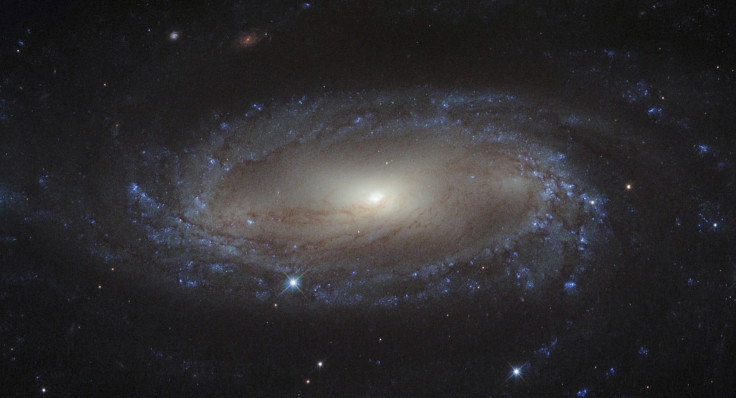Scientists discover rare ‘Frankenstein’ galaxy that is younger on the inside than its outside

Scientists have revealed in a new study that a “Frankenstein” galaxy, formed from parts of other galaxies, is younger on its inside than the outside. UGC 1382 is situated about 250 million light years away and is seven times wider than out galaxy Milky Way. The galaxy looks as if it was built out of spare parts. In most cases, galaxies’ innermost parts form first with oldest stars. Gradually they grow outward with newer younger regions.
“The centre of UGC 1382 is actually younger than the spiral disk surrounding it. It's old on the outside and young on the inside. This is like finding a tree whose inner growth rings are younger than the outer rings,” study co-author Mark Seibert of the Observatories of the Carnegie Institution for Science, Pasadena, California, said in a press release.
The reason why this rare “Frankenstein” galaxy has been able to survive is because it lies in one of universe’s quiet little suburban neighbourhood. It’s not bothered by “ the hubbub of the more crowded parts.” UGC 1382 is extremely delicate and slight nudge from a neighbour may cause it to disintegrate.
Scientists believe that two separate parts may have first formed independently and then they merged to form. Thus, the rare galaxy may have formed from separate parts and this answers the younger core.
Graduate student Lea Hagen and Seibert were looking for ordinary elliptical galaxies when they made this accidental discovery. Previously researchers had thought that UGC 1382 was an ordinary elliptical galaxy. The scientists noticed “spiral arms extending far outside this galaxy.” This has never been noticed by anyone before and elliptical galaxies do not have such spiral arms.
This interested the scientists who wanted to know more about the galaxy and how it was formed.
“By understanding this galaxy, we can get clues to how galaxies form on a larger scale, and uncover more galactic neighbourhood surprises,” Hagen said.
The researchers looked at images of galaxies in ultraviolet light through data from NASA's Galaxy Evolution Explorer (GALEX). They also looked at data provided by other telescopes such as the Two Micron All-Sky Survey (2MASS), Sloan Digital Sky Survey, Carnegie's du Pont Telescope at Las Campanas Observatory, National Radio Astronomy Observatory's Very Large Array and NASA's Wide-field Infrared Survey Explorer (WISE).
The study will be published in The Astrophysical Journal.





















